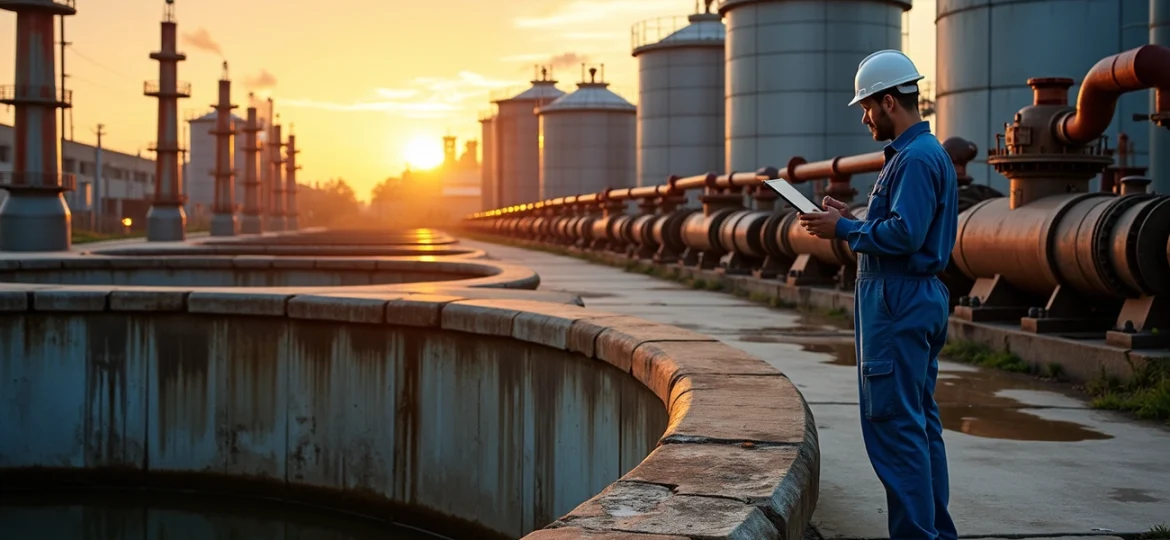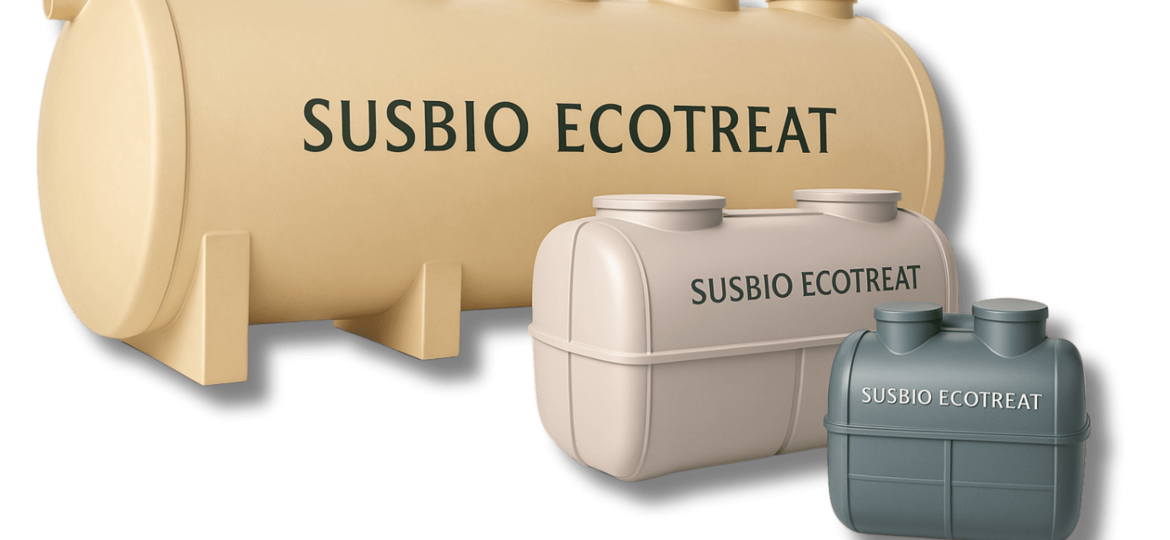Our global water challenges have pushed wastewater treatment methods to evolve faster. The continuous rise in wastewater production and discharge calls for better treatment alternatives to protect water resources and public health. A comparative analysis shows that traditional processes like Activated Sludge Process (ASP) and UASB+EA provide economical solutions with simpler designs. These methods don’t deal very well with stricter effluent quality standards unless additional post-treatment steps are added.
Traditional and modern approaches show stark differences. Conventional wastewater treatment methods see worldwide implementation because of their low cost and simple operations. However, they come with major drawbacks – large footprints, long operational cycles, and poor overall treatment effectiveness. Advanced wastewater treatment methods like Sequencing Batch Reactors (SBR) and Membrane Bioreactors (MBR) show better treatment efficiencies for Biochemical Oxygen Demand (BOD), Total Suspended Solids (TSS), and nutrient removal. These advanced methods require more energy and upfront capital investment. Biological wastewater treatment methods have made progress with technologies like BDBR. These systems deliver excellent effluent quality with BOD and TSS values staying below 10 mg/L, while total nitrogen removal reaches up to 80%. Tertiary wastewater treatment methods have become crucial parts to keep resources available and usable.
This piece will get into the complete range of wastewater treatment technologies, from original approaches to advanced innovations. You’ll learn about their comparative performance, energy needs, cost implications, and suitability for different applications. This knowledge will help you choose the right solution for your specific treatment needs.
Step-by-Step Breakdown of Conventional Wastewater Treatment

Conventional wastewater treatment uses a sequence of physical, chemical, and biological processes that clean contaminated water before releasing it back into the environment. These treatment stages work together in engineered steps to clean wastewater progressively.
Coagulation and Flocculation Process
The process starts when treatment plants add chemicals like aluminum or ferric salts to wastewater. These create a precipitate that removes suspended solids, algae, and color through adsorption and trapping. This destabilization neutralizes negative charges on dispersed particles, which lets them stick together and form microflocs. Quick mixing helps distribute the coagulant properly and encourages particle collisions. The next stage, flocculation, uses gentle mixing to increase particle size from submicroscopic microfloc to visible suspended particles. Treatment plants can add polymers called coagulant aids during this step to make flocs stronger, heavier, and settle faster.
Sedimentation and Sludge Handling
Sedimentation removes most flocs through gravity after the flocculation process. Flocs settle in horizontal basins with typical tank loadings of <1-5 m/h. This process separates heavier solids (sludge) that sink down, while oils and grease rise to the surface. The system removes 50-60% of suspended solids during primary sedimentation, which reduces strain on later processes. The collected primary and secondary sludge needs additional processing through thickening, digestion, and dewatering. Anaerobic digestion reduces total solid mass, kills pathogens, and transforms about half of the organic sludge solids into liquids and gasses.
Filtration and Chlorination
Sand-based deep-bed filtration captures any remaining particulate matter. Water flows through sand grains (0.5-1.0 mm in diameter) in a one-meter deep bed at filtration rates of 4-10 m/h. The system traps particles through straining, sedimentation, interception, and electrostatic adhesion. The final chlorination step adds measured chlorine amounts to create a residual that kills bacteria, viruses, and cysts. Water treatment plants have used this disinfection method for over a century, which has helped eliminate water-borne diseases.
Limitations in Nutrient Removal and Pathogen Control
Conventional processes remove physical contaminants well but struggle to eliminate nutrients completely. Treatment plants can remove settleable solids through primary treatment, but secondary treatment only removes a small amount of dissolved nutrients. Pathogens show different fate and decay patterns in sewerage systems, which affects how well we can detect and remove them. Traditional methods cannot eliminate pharmaceuticals, microplastics, and certain stubborn pollutants without advanced treatment.
Modern Wastewater Treatment Methods and Innovations

Recent innovations in wastewater treatment have substantially boosted purification efficiency and solved many problems that traditional approaches could not handle. Modern methods now offer promising solutions to tackle complex pollutants that conventional systems don’t deal very well with.
Membrane Bioreactors (MBR) and Their Efficiency
Membrane bioreactors combine suspended growth biological reactors with solids removal via filtration. They effectively replace secondary clarifiers and sand filters used in typical activated sludge systems. MBRs maintain higher biomass concentrations, which allows smaller bioreactors and cuts space requirements by up to 50% compared to conventional systems. MBR’s permeate contains very low concentrations of bacteria, total suspended solids, BOD, and phosphorus, which enables high-level disinfection. These systems work great for reuse applications and surface water discharge that needs extensive nutrient removal.
Advanced Oxidation Processes (AOPs) for Recalcitrant Pollutants
Advanced oxidation processes have become effective solutions that degrade stubborn contaminants by generating reactive oxygen and hydroxyl radicals. AOPs use ozone, hydrogen peroxide, and UV light to produce highly reactive oxygen species that break down pollutants at an almost atomic scale. The process targets many contaminants at once, which makes it valuable especially when you have pharmaceuticals, pesticides, endocrine disruptors, and other micropollutants that conventional secondary treatment only partially removes.
Tertiary Treatment with UV and Ozone
Tertiary treatment with ozonation and UV disinfection works exceptionally well against viruses, bacteria, protozoa, and other pathogenic microorganisms. Ozone damages nucleic acids and ruptures cell membranes through indiscriminate oxidation. This makes it effective in areas where chlorine falls short. The energy consumption of ozonation at wastewater treatment plants ranges from 0.06–0.13 kWh/m³, which is 20–40% of total energy consumption. UV treatment combined with hydrogen peroxide offers alternative disinfection pathways that vary in efficiency based on operating conditions.
Integration of Nanotechnology and Smart Sensors
Nanotechnology applications in wastewater treatment include adsorption, nanofiltration, photocatalysis, and disinfection. Nanomaterials have better reactivity, excellent adsorption properties, and high surface-to-volume ratio. These properties create unique opportunities to develop more efficient catalysts for wastewater purification. Smart sensors enable live monitoring of water quality parameters across facilities and detect performance fluctuations immediately. These sensor systems send data from treatment pools and equipment to central hubs where operators can analyze statistics and handle potential hazards quickly.
SUSBIO ECOTREAT stands out as India’s most advanced packaged Sewage Treatment Plant. It offers future-ready technology that tackles multiple treatment challenges at once.
Comparative Analysis: Traditional vs Modern Approaches
Modern and 50-year old treatment systems show significant differences in their performance metrics across key parameters.
Treatment Efficiency: BOD, COD, TSS, TN
Modern systems consistently outperform their traditional counterparts in removal capabilities. Membrane bioreactors (MBRs) achieve BOD, COD, and TSS removal efficiencies above 95% in operations of all types. Traditional activated sludge processes reach only 85-90% efficiency. Fixed-bed MBRs show total nitrogen removal rates between 25-49% under aerobic-anoxic conditions, which surpasses conventional MBRs at 12-27%.
Energy and Cost Trade-offs
Compact, advanced systems prove more economical despite higher upfront costs. Traditional aeration processes use 50-80% of a treatment plant’s energy costs. Notwithstanding that, newer technologies like algae-based systems cut energy operating costs by 0.05-0.41 EUR/m³ and 15.4-180.8 EUR/inhabitant compared to activated sludge methods.
Scalability and Land Use
Space efficiency makes modern packaged systems crucial in areas with limited land. Traditional large-scale systems cost too much in low-density areas, while small-scale decentralized solutions provide flexibility and modularity. SUSBIO ECOTREAT, India’s most advanced packaged STP, demonstrates this with its minimal space requirements.
Suitability for Urban vs Rural Applications
Dense populations benefit from centralized systems’ economies of scale, making conventional approaches dominant in urban areas. Rural regions face unique challenges that make decentralized solutions more suitable. Small towns struggle with limited human and financial resources, which makes packaged solutions like SUSBIO ECOTREAT perfect for their needs.
SUSBIO ECOTREAT: A Packaged STP for the Future
SUSBIO ECOTREAT stands at the forefront of wastewater management technology. This advanced packaged Sewage Treatment Plant offers Indian industries a future-ready alternative to traditional sewage treatment systems.
Plug-and-Play Installation and Compact Design
SUSBIO ECOTREAT’s prefabricated design makes installation quick and reduces time and labor costs substantially. The system’s fiber-reinforced plastic construction provides excellent protection against corrosion, chemicals, and environmental factors. The system comes as a compact, modular unit that needs minimal civil work and scales easily from small communities to large industrial setups.
Sustainable Operation with Biogas Generation
SUSBIO ECOTREAT uses anaerobic digestion to turn wastewater sludge into biogas and renewable energy. The process reduces sludge volume while producing methane that powers the facility at lower costs. The system’s environmental benefits include a reduced carbon footprint and preserved valuable nutrients like nitrogen and phosphorus.
Low Energy Footprint and Minimal Maintenance
Smart automation and optimized aeration help SUSBIO ECOTREAT use 90% less electricity than conventional STPs. The system runs automatically without on-site operators, which cuts labor costs. Users can expect substantial operational savings throughout its 15-25 year lifespan.
Support for Decentralized Wastewater Management
SUSBIO ECOTREAT works perfectly for decentralized wastewater management, especially in areas with limited infrastructure. The system enables sustainable wastewater reuse while meeting all regulatory requirements.

Conclusion
Our analysis shows how wastewater treatment technologies have developed and how well they work compared to each other. Traditional methods gave us a good start in water purification. They don’t deal very well with today’s complex contaminants and strict environmental standards. Modern solutions like Membrane Bioreactors and Advanced Oxidation Processes work better at removing BOD, COD, TSS, and nutrients.
The data reveals a clear performance gap between old and new approaches. Traditional systems usually achieve 85-90% removal rates. New technologies consistently exceed 95% efficiency. Modern systems need more money upfront, but their benefits pay off over time. They use less energy, take up less space, and need less maintenance.
SUSBIO ECOTREAT leads the pack as India’s most advanced packaged Sewage Treatment Plant. This future-ready solution tackles several challenges at once. It offers plug-and-play installation, environmentally responsible biogas generation, and uses minimal energy. Its compact design works great for decentralized applications where space is tight and infrastructure is limited.
Picking between traditional and modern wastewater treatment depends on location, population density, available resources, and regulations. Water quality standards keep getting stricter worldwide, which makes advanced treatment technologies more attractive. We all share the responsibility to protect water resources. We need solutions that can handle both current pollution issues and new contaminants effectively.
The future of wastewater treatment will likely combine reliable proven methods with innovative technologies’ boosted capabilities. Solutions like SUSBIO ECOTREAT aren’t just better versions of old technology – they’re vital tools for sustainable water management in our water-stressed world.
Key Takeaways
Modern wastewater treatment technologies significantly outperform traditional methods, offering superior efficiency and sustainability for today’s complex water challenges.
- Modern systems like MBRs achieve 95%+ removal efficiency for BOD, COD, and TSS, compared to 85-90% for conventional methods
- Advanced technologies consume up to 90% less energy than traditional STPs while requiring 50% less space through compact designs
- Traditional methods struggle with nutrient removal and emerging contaminants like pharmaceuticals and microplastics that modern AOPs effectively eliminate
- Packaged solutions like SUSBIO ECOTREAT offer plug-and-play installation with biogas generation, making them ideal for decentralized applications
- While modern systems require higher initial investment, their long-term operational benefits through reduced energy and maintenance costs justify the expense
The shift toward advanced wastewater treatment isn’t just about better performance—it’s about meeting stricter environmental standards while creating sustainable, energy-efficient solutions that can adapt to diverse applications from urban centers to rural communities.
Frequently Asked Questions
Q1. What are the key differences between traditional and modern wastewater treatment methods?
Modern methods like Membrane Bioreactors (MBRs) achieve over 95% removal efficiency for BOD, COD, and TSS, compared to 85-90% for conventional methods. They also consume less energy, require less space, and are more effective at removing nutrients and emerging contaminants.
Q2. How do advanced oxidation processes (AOPs) improve wastewater treatment?
AOPs use ozone, hydrogen peroxide, and UV light to generate reactive oxygen species that break down pollutants at an almost atomic scale. They are particularly effective at eliminating pharmaceuticals, pesticides, and other micropollutants that conventional treatments struggle to remove.
Q3. What are the advantages of packaged sewage treatment plants like SUSBIO ECOTREAT?
Packaged STPs like SUSBIO ECOTREAT offer quick, plug-and-play installation, compact design, and sustainable operation with biogas generation. They consume up to 90% less electricity than conventional STPs and require minimal maintenance, making them ideal for decentralized applications.
Q4. How do modern wastewater treatment methods address the limitations of conventional systems in nutrient removal?
Modern systems like fixed-bed MBRs demonstrate significantly higher total nitrogen removal rates (25-49%) compared to conventional MBRs (12-27%). Advanced technologies also incorporate specific processes for phosphorus removal, addressing a key limitation of traditional methods.
Q5. Are modern wastewater treatment methods more cost-effective than traditional approaches?
While modern systems often require higher initial investment, they can be more cost-effective in the long run. They offer reduced energy consumption, lower maintenance requirements, and often generate renewable energy through biogas production, leading to substantial operational savings over their lifespan.






